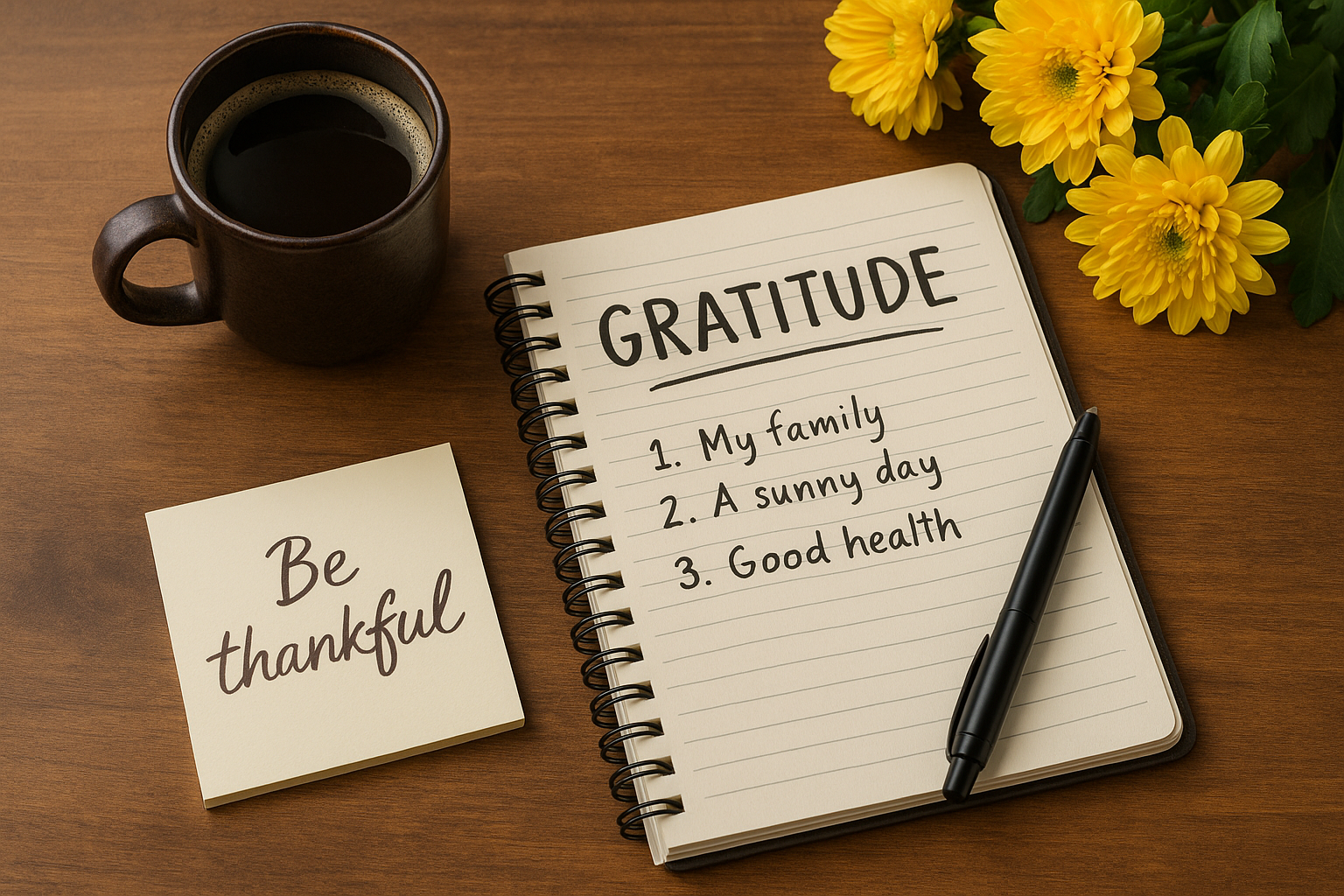Gratitude is more than just saying “thank you”—it’s a mindset and a habit that can transform the way you experience life. Practicing gratitude consistently can help you feel more positive, improve your relationships, reduce stress, and even boost your physical health.
In this article, you’ll learn how gratitude works, why it’s so powerful, and how to make it a natural part of your day-to-day routine.
Why Gratitude Matters
Gratitude has been widely studied in psychology and neuroscience. The results are clear: people who regularly practice gratitude tend to be happier, more resilient, and healthier.
Here’s what gratitude can do for you:
- Improve mood and reduce symptoms of depression
- Strengthen relationships and social bonds
- Reduce stress and anxiety
- Improve sleep and physical well-being
- Increase self-esteem and optimism
Gratitude helps you focus on what’s working, even when life is challenging.
What Gratitude Is (and What It Isn’t)
Gratitude is about noticing and appreciating the good in your life—both big and small.
It is not:
- Ignoring problems or pretending everything is perfect
- Forced positivity
- Denial of pain or hardship
You can feel gratitude alongside grief, stress, or struggle. In fact, that’s when it’s most powerful.
Simple Ways to Practice Gratitude Daily
1. Keep a Gratitude Journal
Spend 5 minutes each day writing down 3 things you’re grateful for. They can be:
- A hot cup of coffee
- A text from a friend
- A moment of peace during your commute
Be specific. Instead of “my family,” try “my sister calling me today to check on me.” Specific memories carry more emotional weight.
2. Use Gratitude Prompts
When journaling, use prompts to explore deeper gratitude. Try these:
- “Today, I smiled because…”
- “Something small that made a big difference today was…”
- “A person I’m thankful for and why…”
- “A challenge I’m grateful for because it taught me…”
Prompts help uncover what you might otherwise overlook.
3. Say Thank You Out Loud
Verbal gratitude strengthens relationships and reinforces your positive experiences.
Start by:
- Thanking a co-worker for their help
- Telling a family member how much they mean to you
- Saying “thank you” to yourself for completing a task
Words matter. Saying them out loud makes your gratitude real.
4. Create a Visual Gratitude Board
Cut out or print images, quotes, and moments that make you feel grateful. Pin them to a board or collage them digitally.
Place it somewhere you’ll see every day—your desk, bedroom wall, or phone background.
Seeing your blessings visually helps you stay connected to what’s good.
5. Practice Gratitude During Tough Moments
This doesn’t mean pretending to be happy when you’re not—it means pausing to notice what’s still good, even when things are hard.
Try this during stress:
- Take a deep breath
- Identify one thing that’s helping you cope
- Acknowledge your effort, not just your outcome
Gratitude is a form of emotional resilience.
6. Use Technology for Gratitude Reminders
Set daily phone alarms or calendar reminders labeled:
- “What are you thankful for right now?”
- “Pause and find the good”
- “Name 1 thing that made today easier”
You can also use gratitude apps like:
- Gratitude
- Presently
- Happyfeed
These small nudges help build the habit.
7. Share Your Gratitude with Others
Start a text thread or group chat where you and a friend share daily wins or thankful moments. Or simply end your day by texting someone, “Something I appreciated today was…”
Gratitude is contagious—and sharing it multiplies the effect.
Common Obstacles (and How to Overcome Them)
“I don’t have time.”
→ You only need 2–5 minutes. Attach it to an existing habit like brushing your teeth or making coffee.
“I can’t think of anything to be grateful for.”
→ Start small. Look around. Is there food? A roof? A warm bed? A smile? A breath? That’s enough.
“It feels forced.”
→ At first, it might. Stick with it. Gratitude is like a muscle—the more you use it, the more natural it becomes.
Real-Life Examples of Gratitude in Action
- A busy parent journals for 2 minutes before bed and starts sleeping better
- A college student keeps a sticky note on their laptop with daily appreciation
- A remote team opens every meeting with one thing each person is grateful for
- A runner reflects on her gratitude for her legs and lungs during tough miles
These aren’t big gestures—they’re small, consistent choices that create lasting impact.
Gratitude Is a Daily Gift to Yourself
You don’t need to wait for a perfect moment to be grateful. Gratitude makes this moment enough.
Start here:
- Write down three things you’re thankful for right now
- Send a quick thank-you message to someone in your life
- Place one gratitude reminder where you’ll see it tomorrow
The more you practice gratitude, the more joy, calm, and connection you’ll feel—not someday, but today.
